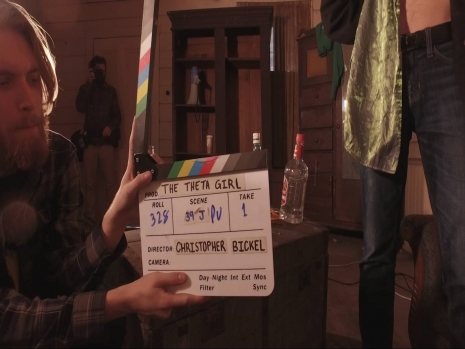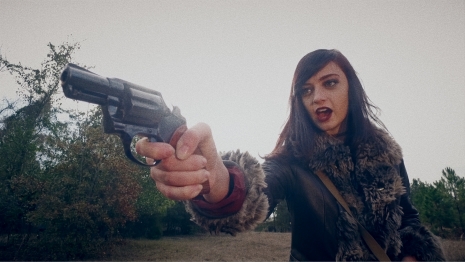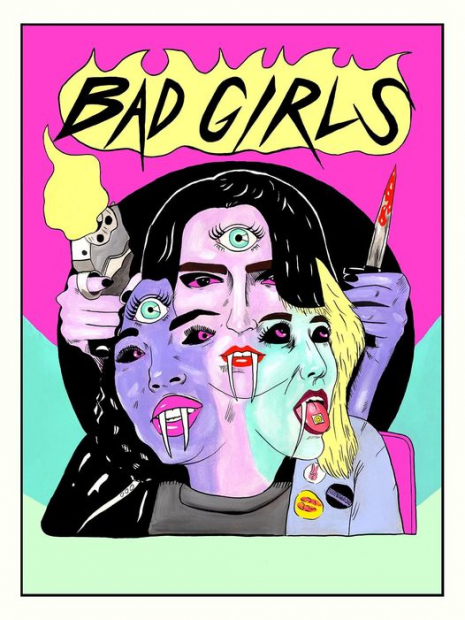
‘BAD GIRLS’ poster designed by artist Corinne Halbert.
South Carolina-based filmmaker Christopher Bickel’s first film, the widely praised The Theta Girl, was released three years ago. Bickel recently unleashed a trailer for his second film, Bad Girls. The pandemic’s effects changed everything for everyone, but thankfully, with many of his original cast and crew from The Theta Girl, the film is on target to see the light of day in 2021. When the trailer was released, Bickel launched an Indiegogo page to help raise a modest amount of funds to help cover some of the film’s costs, which had a budget of 16K. The response was enthusiastic and, to date, has raised just over $10K. This does not include the cost of distributing Bad Girls, as in Bickel’s own words, they intend to stay true to their “DIY punk rock roots.” Here’s a bit from Bickel’s Indiegogo page that echoes this sentiment and helps give you a little insight as to what you can expect from Bad Girls:
“Citing influences as diverse as Jack Hill, Russ Meyer, Gregg Araki, R. Kern, David Lynch, Monte Hellman, Sam Peckinpah, John Waters, and Robert Downey (Sr.), we have crafted a vision more than just the sum parts of those influences. More than anything, it was probably the get-it-done-cheap lessons of Roger Corman that were the guiding light of this picture. This is a punk rock demo tape of a movie made for people who love punk rock demo tapes and movies.”
If you’re nodding your head because you too love punk rock demo tapes and movies, I get it because I love both of those things too. Also, if Christopher Bickel’s name is familiar to our Dangerous Minds regulars, he spent a few years here as a popular contributor. Since Christopher and I go back a bit, I called him (yes, on the phone) and had a chat about Bad Girls. Who knew it would be so much fun to pick the brains of someone who likes to blow brains up on screen? Well, I did.
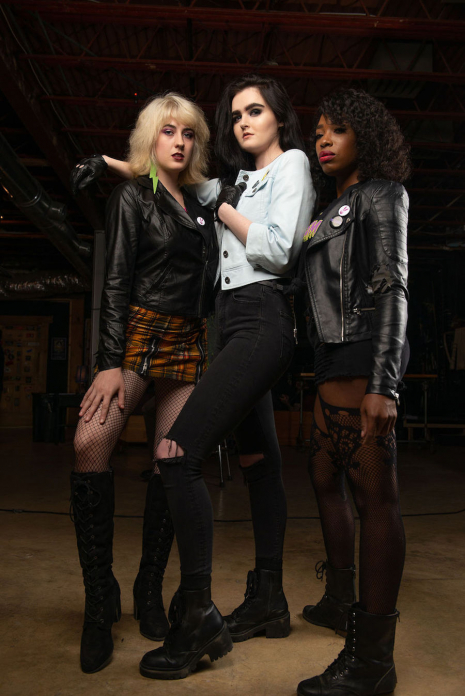
The bad girls from ‘Bad Girls’ left to right are, Shelby Lois Guinn, Morgan Shaley Renew, and Sanethia Dresch.
DM: When an art form is censored, that inevitably creates an underground movement. Your first film, The Theta Girl, utilized a few perceived cinematic “taboos” such as full-frontal nudity and nude scenes with people of all sizes and colors. As the leader of a collective of creative people working to subvert the norm, what did you do in Bad Girls to keep that vibe going?
Christopher Bickel: I don’t think there are any taboos left—everything’s been done. When you’re creating something new, you’re drawing from ideas you’ve seen before. If there is anything about this movie that sets it apart from anything else, it’s a different reconstitution. There are some elements that may shock people, but it’s presented in a unique way.
DM: The response to the PR for Bad Girls has been exciting to watch. Tell me a little about some of the artists you used to create posters and other artifacts for the film, and how some of their bold visuals were incorporated.
Christopher Bickel: We got really lucky with (poster artist) Ethan Hanson, as he was just a guy I knew from Columbia who was making films, and eventually moved to the West Coast to be a graphic artist. His short film The Checkout Line blew me away and it’s where I really fell in love with the acting of Jonathan Benton, who I ended up casting as “Rusty” in Bad Girls. Hanson’s portfolio is jaw-dropping and his work on the Bad Girls art gives me a Michael Mann vibe. After seeing The Theta Girl, we got together, and I offered him some creative advice, and I think contributing his artwork to Bad Girls was his way of saying thanks. It also makes Bad Girls look like “an actual real movie.” I was introduced to Corinne Halbert by Christina Ward of Feral House and I just fell in love with her work instantly. It really captures the anarchic spirit of the film.
_465_689_int.jpg)
‘Bad Girls’ poster by artist and filmmaker Ethan Hanson.
DM: You and your crew came up with some creative, special effects for Bad Girls. I’m wondering if you might have any behind-the-scenes stories to share about the effects you created for Bad Girls. Kind of like along the lines of when Dan O’Bannon paid bonuses to members of his The Return of the Living Dead crew if they would eat calf brains to help increase the authenticity of the zombie scenes?
Christopher Bickel: Well, I knew I wanted a baby to be “accidentally” blown up with a shotgun in Bad Girls so I was trying to figure out how to actually do that. Then I remembered the scene from David Cronenberg’s 1981 film Scanners when they blew up the first scanners’ head (played by unfortunate Canadian actor Louis Del Grande). They eventually figured that getting that kind of effect would need use of a shotgun. So we did the same thing, and I insisted on doing that stunt myself. There’s a definite danger element in a stunt like that. I set up a barrier and cleared the set and we did it. I believe you need to have those “what did I just see?” moments in a film around every ten minutes.
DM: You took on a lot of responsibility with The Theta Girl beyond directing it, such as the film’s cinematography, some of the sound/music, the arduous process of editing and providing some of the funding for the film. What was the scope of your “job” this time around?
Christopher Bickel: In a way, I did way more this time. I didn’t write The Theta Girl. But this one I did co-write with Shane Silman. One thing I learned was it is hard to direct and shoot at the same time. You’re either paying attention to the frame or the performance and if you’re too involved with one you’re not paying attention to the other. For Bad Girls, I was running a second camera next to my director of photography, Stephen Nemeth, the entire time so we could capture two different angles. So I ended up in the same boat I was in with The Theta Girl—doing too much. I always try to follow the Roger Corman lesson, which I believe is something like “do whatever you have to do to get things done in the time you have.” So most times that means wearing a lot of different hats.
DM: You had over sixty cast and crew members working on The Theta Girl. Did many of them return to work with you on Bad Girls?
Christopher Bickel: Yeah. At least four actors from Theta Girl returned for this one. I like the idea of having a John Waters “Dreamland” sort of group who come back to work on each project.
DM: Did you actually destroy actor and co-writer of Bad Girls’ Shane Silman—as Danny Lucifer’s—house? I have to know!
Christopher Bickel: The place that played the part of Danny’s house was filmed using three different houses. Two different interiors and one exterior location. We lit a controlled fire that appeared to burn in a house but wasn’t in an actual house. So, technically that’s four locations. We shot the exteriors of the police siege in the front yard of one of our producers, Stephan. His neighbors were… not too happy. I was actually hoping they would call the cops because I needed a shot of some cop cars!
If this all sounds pretty great to you, then you clearly appreciate films with a penchant for bloodshed and roving female gangs out for blood. To learn more about Bad Girls or to help support the film (which will get you some very cool campaign presents, like signed Blu-rays, a t-shirt featuring artist Corinne Halford’s incredible Bad Girls design or more, visit the Bad Girls Indiegogo page. In the meantime, take enjoy some of the stills and promotional images for the film, then turn up your speakers and set up a splash guard while you check out the trailer for Bad Girls!
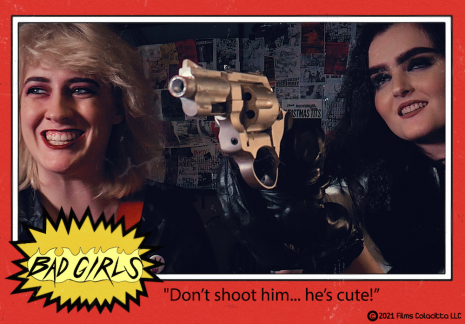
(Above and below) Two vintage-looking ‘Bad Girls’ lobby card done by director Christopher Bickel.

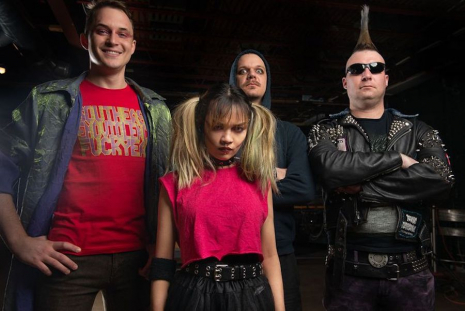
The festive-sounding fictional punk band Christmas Tits from ‘Bad Girls.’
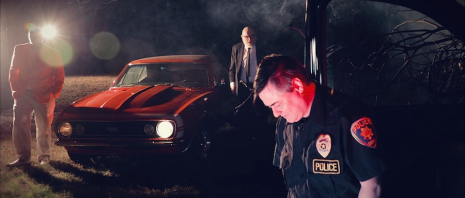
A still from ‘Bad Girls’ featuring director Bickel as a cop. The film also features several classic cars from Gate Keeper Corvette Gasser owned by Rob Tansey and Shauna Morgan Brown. The pair also did the stunt driving in ‘Bad Girls.’
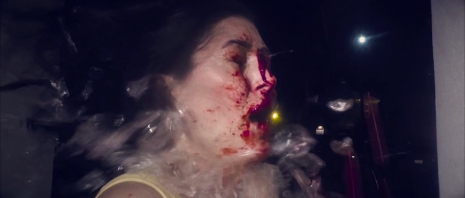
Bad Girls SMASH!
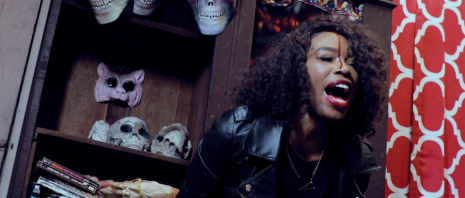
Actress Sanethia Dresch in action.
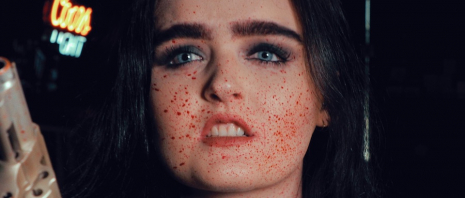
Actress Morgan Shaley Renew in a still from ‘Bad Girls.’
The ‘Bad Girls’ trailer
Previously on Dangerous Minds:
The killer unreleased score for the 1982 low budget slasher film, ‘Unhinged’
Indie film ‘I Declare War’ is a teenybopper ‘Apocalypse Now’
Brains not fists: Director Khalil Joseph and Shabazz Palaces salute classic black indie film
‘She’s a Punk Rocker UK’: Watch the documentary on England’s female punk pioneers






